[Peter delves into a show of raw, intentionally upsetting photography and videography, presented as a slideshow of increasingly dire transgressions. Please note that this post contains nudity and depictions of drug use, including needles. — the Artblog editors]
You don’t stumble upon Transgressions accidentally. The Papermill gallery in north Kensington, where the photo exhibition is shown, is not on anybody’s gallery crawl agenda. You have to find it, crossing rail tracks and navigating streets with more than their share of boarded-up buildings. You have to want to be there.
Take a seat
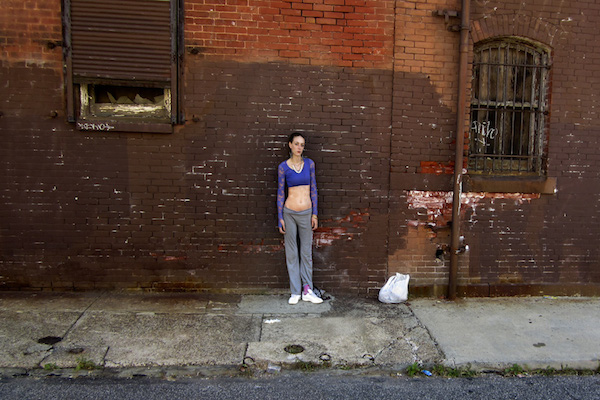
Are the subjects in photographer Ray Horsch’s opus of pornography of grotesquery likewise there voluntarily? Many clearly are. Others have fallen so far down the rabbit hole of drugs and prostitution that it is unclear who is making the decisions: the photographer, the women, or the heroin.
When you arrive at The Papermill to see these women–these naked women, because by now you know what you’ve come here to see (the show is available in its entirety online)–you step into a large, empty room furnished with two upholstered easy chairs, both facing a large-screen television in the middle of the room.
The photos are shown as a digital slideshow. Horsch said he is too cheap to frame the dozens of images (I didn’t count them, but there are well over 100), but I suspect he is not entirely honest. The slideshow format allows him to present the images like a movie, with a narrative arc manipulated by Horsch’s own sense of timing and musical accompaniment.
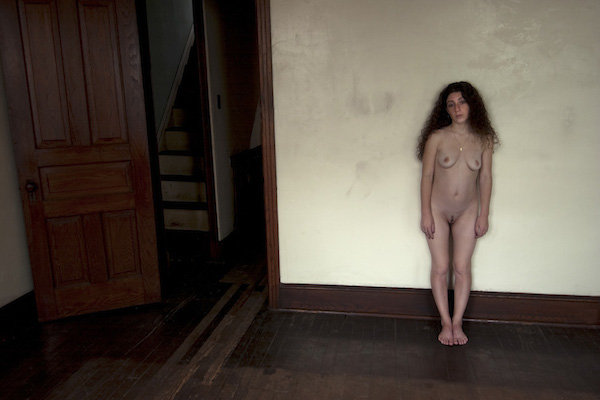
You’re settling into one of the easy chairs, which are sort of comfortable, but still you are uneasy–as though you are in the basement of your older neighbor, who wants to show you his dirty pictures. Who sat in this chair before you? Perhaps you’d better stand for this.
Horsch’s history
Transgressions is divided into two parts: The first is a retrospective of Horsch’s 50-plus years as a photographer. His interest in nudity and pornography go back to the 1960s, when he was shooting video for “Sesame Street” and moonlighting in porn. In the early 1970s, he made several porn films in New York and Philadelphia, including “Confessions of a Male Chauvinist Pig” and the public-sex film “Streets of New York.”

He knows his way around smut. Many of the nudes are tasteful–even tame–with gauzy lighting and casual poses that would not be out of place in a 70s-era Playboy spread. There are lots of fetish shots, including transvestism and blood play, that have some of the fun that marked Charles Gatewood’s celebrated S&M photography. There is a formal portrait of a large black man dressed in lacy pink bra and panties–the guy is chuckling at himself, as are we.

The second part of the presentation is Horsch’s most recent project. For about 10 years, he has been shooting heroin addicts and sex workers around Kensington. All of them women; all of them naked. This is where the narrative arc comes in. [SPOILER ALERT: Before heroin kills you, it will make you extremely ugly.]
The downward spiral

The story begins with “Heroin Chic,” with pretty, naked women posed with needles. Some of these are clearly studio shots, with prop furniture and backdrops. Some have blood from the injection site dripping down their arms, or (in the case of a neck injection) across their breasts. Even the blood seems clean.
Is the blood real? For years, Horsch has used the same pool of models for his photography and film work. His explicit film “Slaves,” released in 2003, is a quasi-documentary about a guy (Horsch) who keeps a harem of sex slaves. The women in that film (who apparently had a hand in shooting it, according to Horsch) appear in his photography, too. They participate in both the project and the lifestyle.
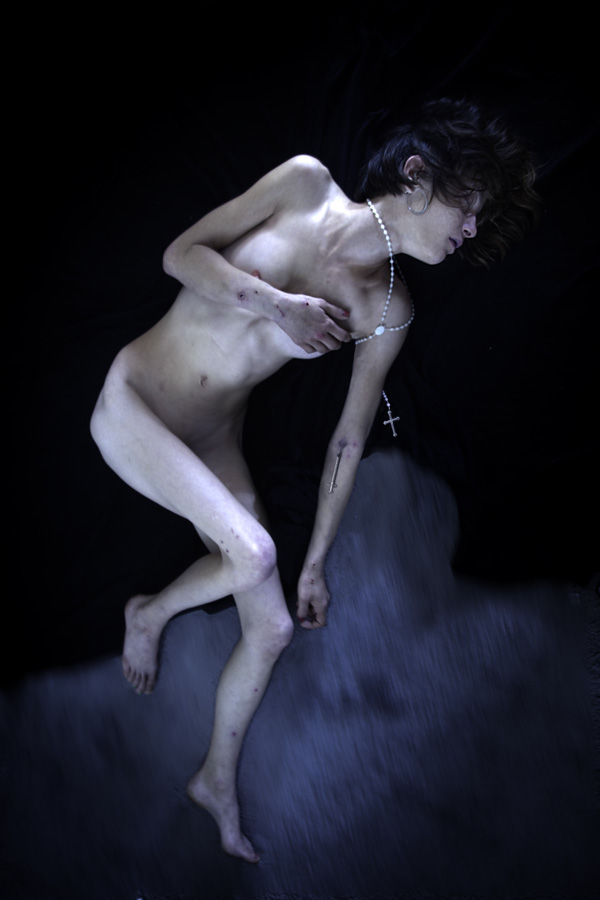
Horsch’s pictures take a 180-degree turn, following the women as they plummet into serious heroin addiction. The glamour lighting is gone, as is the prop furniture. Skin goes from creamy to blotchy to bruised. Their faces become pocked with scratches and open sores. They do not seem to be faking it. The clearly desperate women expose themselves to Horsch’s camera in the same nude poses as the earlier cheesecake shots, this time exposing addiction and degradation, presumably at the photographer’s request.
Some of the same women who had seemed to be having a lark with rough sex play become, over time, emaciated and damaged as heroin deflates their breasts, sinks their eyes, and eats away their fingernails. Throughout their horrific descent, Horsch keeps telling them to take their clothes off for his camera.
Finale and coda
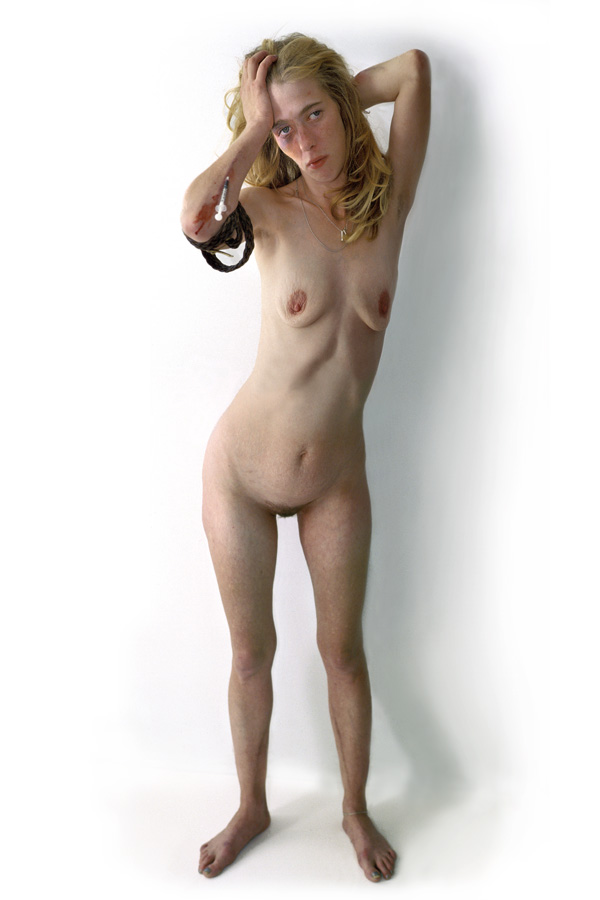
The show shows the spectrum of pornography, from presenting an alluring sex partner to a grotesque warning. Part of that spectrum is exploitation. Undeniably, Horsch is a dyed-in-the-wool pornographer–good or creepy, fun or abusive, his work is a peek into a shadowy erotic world of lifestyle perversion. Nobody has signed a waiver. Do you still want to sit in that easy chair?
The coda of this slideshow is video. After 30 minutes of stills, Horsch presents, somewhat heavy-handedly, a moving image of a crematorium in which a Jane Doe corpse is burned. This is a real Jane Doe, burned at a crematorium that used to be in a Kensington warehouse, where the city morgue would send unidentified remains.
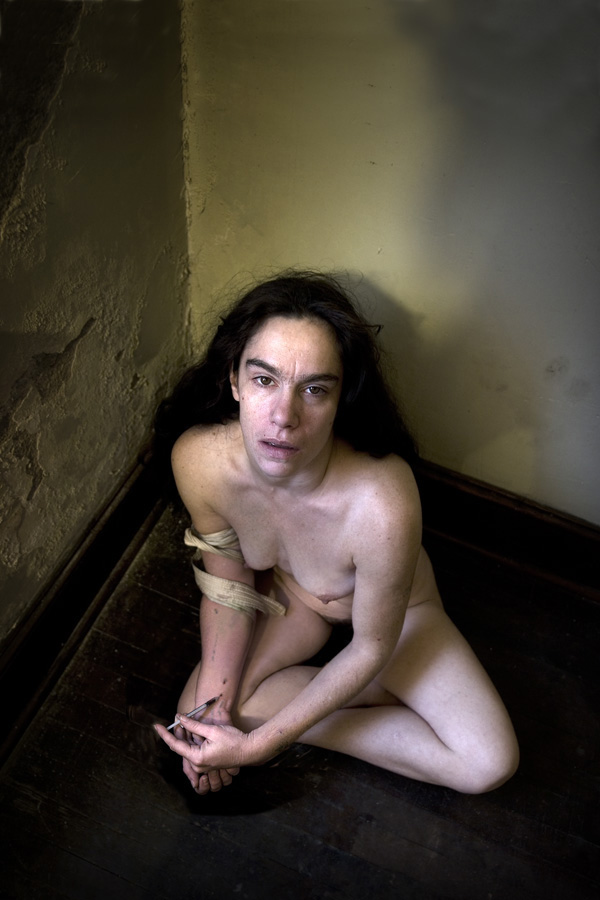
Horsch’s sudden inclusion of video imagery of post-autopsy remains (naked, exposed, eviscerated) burning in an incinerator is presented as proof: This woman is really dead, this women is really burning in front of your eyes. (We don’t know how this woman died–by heroin or some other means.) The takeway (Don’t Do Drugs) is delivered with gasping horror, in part because you wanted to be there to see it.
Peter Crimmins is WHYY’s Arts and Culture reporter and Artblog radio’s recordist and editor.









